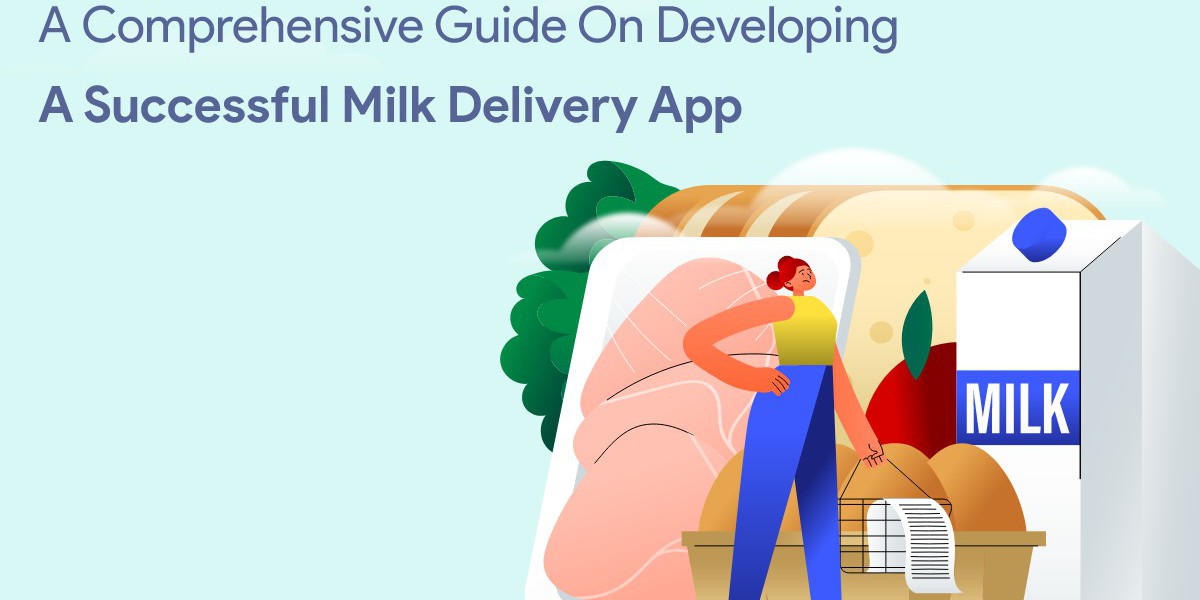The on-demand delivery market has seen exponential growth in recent years, with consumers increasingly seeking convenience and efficiency in their daily lives. Among the various niches within this market, milk delivery apps have emerged as a popular choice, catering to the essential needs of households. This comprehensive guide will walk you through the steps required to develop a successful milk delivery app development, ensuring you can capitalize on this lucrative opportunity.
Understanding the Market and Planning
Conduct Market Research
Before you start developing your milk delivery app, it's crucial to conduct thorough market research. This will help you understand the current landscape, identify your target audience, and spot potential gaps in the market.
Identify Your Target Audience
Understanding who your app is for will shape many of your decisions moving forward. Are you targeting urban professionals, families, or elderly individuals? Each segment may have different needs and preferences.
Analyze Competitors
Look at other milk delivery services in your region and beyond. What do they offer? What are their strengths and weaknesses? Use this information to find your unique selling proposition (USP).
Assess Market Gaps
Identify unmet needs or areas where existing services fall short. This could be anything from better app usability to more flexible delivery schedules.
Develop a Business Plan
Create a detailed business plan outlining your goals, strategies, and financial projections. This plan should include:
- Business Model: Decide if you'll offer subscription services, one-time deliveries, or both.
- Revenue Streams: Determine how you'll make money—through delivery fees, subscription fees, or other methods.
- Marketing Strategy: Outline how you'll attract and retain customers.
Designing Your Milk Delivery App
Key Features to Include
Your app should include several key features to ensure a seamless and user-friendly experience.
User Registration and Profiles
Allow users to create accounts where they can manage their profiles, save delivery addresses, and view order history.
Product Listings
Offer a comprehensive list of dairy products with detailed descriptions, images, and prices. Include options for different types of milk (e.g., whole, skim, almond, etc.).
Order Scheduling
Enable users to schedule their deliveries according to their preferences. Offer options for one-time deliveries, daily, weekly, or bi-weekly subscriptions.
Real-Time Tracking
Provide real-time tracking so users can see the status of their delivery and estimated arrival time.
Payment Integration
Integrate secure payment gateways to offer various payment options, including credit/debit cards, digital wallets, and net banking.
Notifications and Alerts
Send push notifications to keep users informed about their order status, special promotions, and other important updates.
User Experience and Interface Design
Focus on creating a clean, intuitive, and visually appealing interface. Here are some tips:
Simplicity
Keep the interface simple and easy to navigate. Avoid clutter and ensure users can find what they need quickly.
Consistent Design
Maintain a consistent design language throughout the app. Use the same fonts, colors, and button styles to create a cohesive experience.
Accessibility
Ensure the app is accessible to all users, including those with disabilities. This includes using appropriate color contrast font sizes and providing text alternatives for images.
Developing the App
Choosing the Right Development Approach
You have two main options for developing your milk delivery app: hiring a professional app development company or using a no-code/low-code platform.
Hiring an App Development Company
For a high-quality, customized app, consider hiring a professional development team. Look for developers with experience in creating on-demand delivery apps.
Using No-Code/Low-Code Platforms
If you're on a tight budget, no-code or low-code platforms can be a viable alternative. These platforms allow you to build functional apps without extensive coding knowledge.
Backend Development
The backend is the backbone of your app, handling data storage, user authentication, and order management.
Database Management
Choose a robust database management system to handle user data, product listings, and order information securely.
API Integration
Integrate various APIs for payment processing, real-time tracking, and notifications. Ensure these integrations are secure and reliable.
Testing and Quality Assurance
Thorough testing is essential to ensure your app works smoothly and is free of bugs.
Beta Testing
Conduct beta testing with a small group of users to gather feedback and identify any issues.
Performance Testing
Test the app's performance under different conditions to ensure it can handle high traffic and large volumes of data.
Launching Your App
Pre-Launch Activities
Before launching your app, engage in pre-launch activities to build anticipation and attract early adopters.
Marketing Campaigns
Leverage social media, email marketing, and influencer partnerships to create buzz around your app.
Press Releases
Send press releases to relevant media outlets to announce your app's launch and highlight its unique features.
Launch Day
Ensure everything is in place for a smooth launch. Double-check all systems, have customer support ready, and monitor the app closely for any issues.
Post-Launch Activities
After launching your app, focus on user acquisition and retention.
Digital Marketing
Invest in digital marketing strategies such as SEO, PPC advertising, and social media marketing to attract users.
User Feedback
Collect and analyze user feedback to identify areas for improvement. Use this feedback to make necessary updates and enhancements.
Promotions and Discounts
Offer promotions and discounts to encourage new users to try your service and to reward loyal customers.
Monitoring and Optimization
Analyzing Performance
Use analytics tools to monitor your app's performance. Track key metrics such as user acquisition, retention rates, and order frequency.
Continuous Improvement
Regularly update your app based on user feedback and market trends. Introduce new features, fix bugs, and improve the overall user experience.
Customer Support
Provide excellent customer support to address any issues or concerns promptly. This will help build trust and loyalty among your users.
Conclusion
Developing a successful milk delivery app involves thorough market research, careful planning, and strategic execution. Discover the ultimate guide to creating a thriving milk delivery app. Learn from the experts at our on-demand app development company and revolutionize your business today! Embrace the opportunities presented by the growing demand for on-demand delivery services and position your business for long-term success. With the right approach and dedication, your milk delivery app can become a vital part of many households' daily routines, providing convenience and quality with every delivery.



